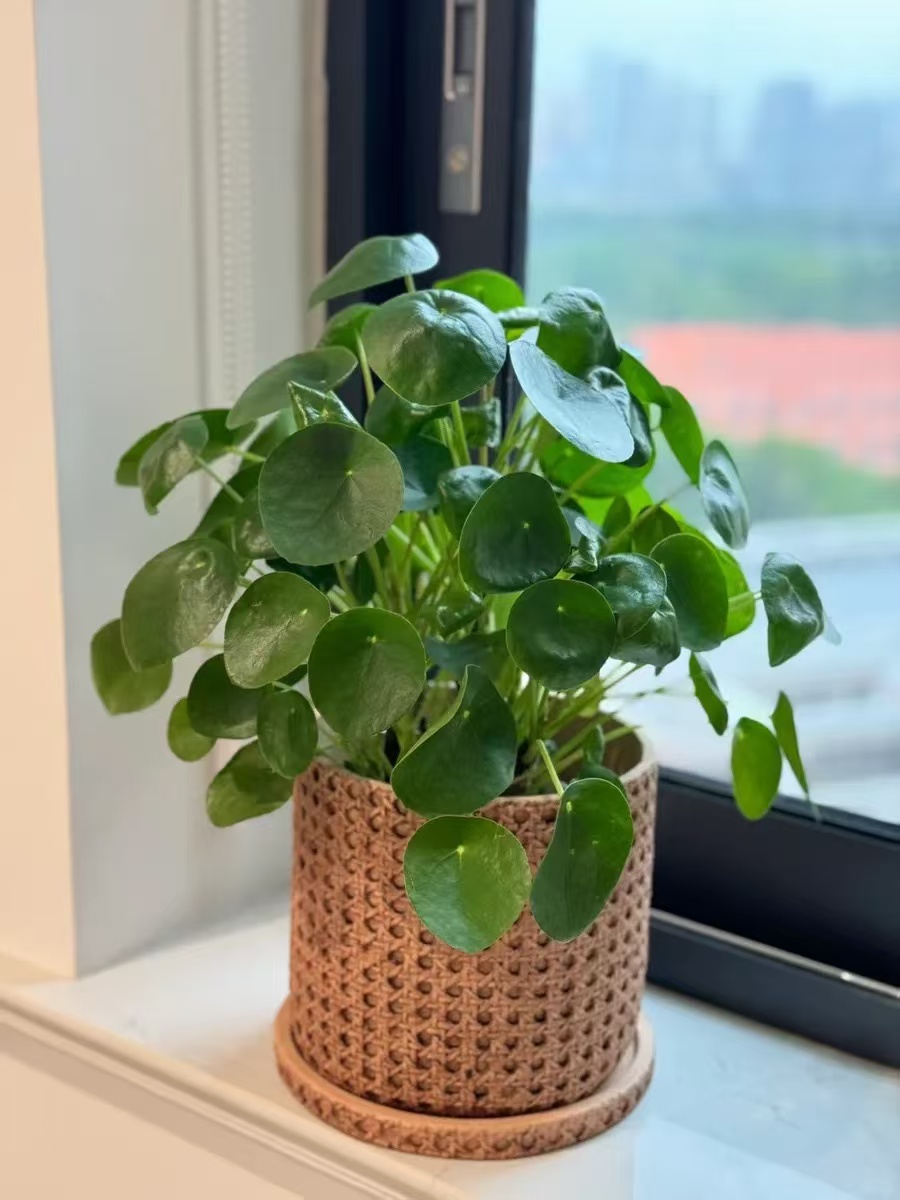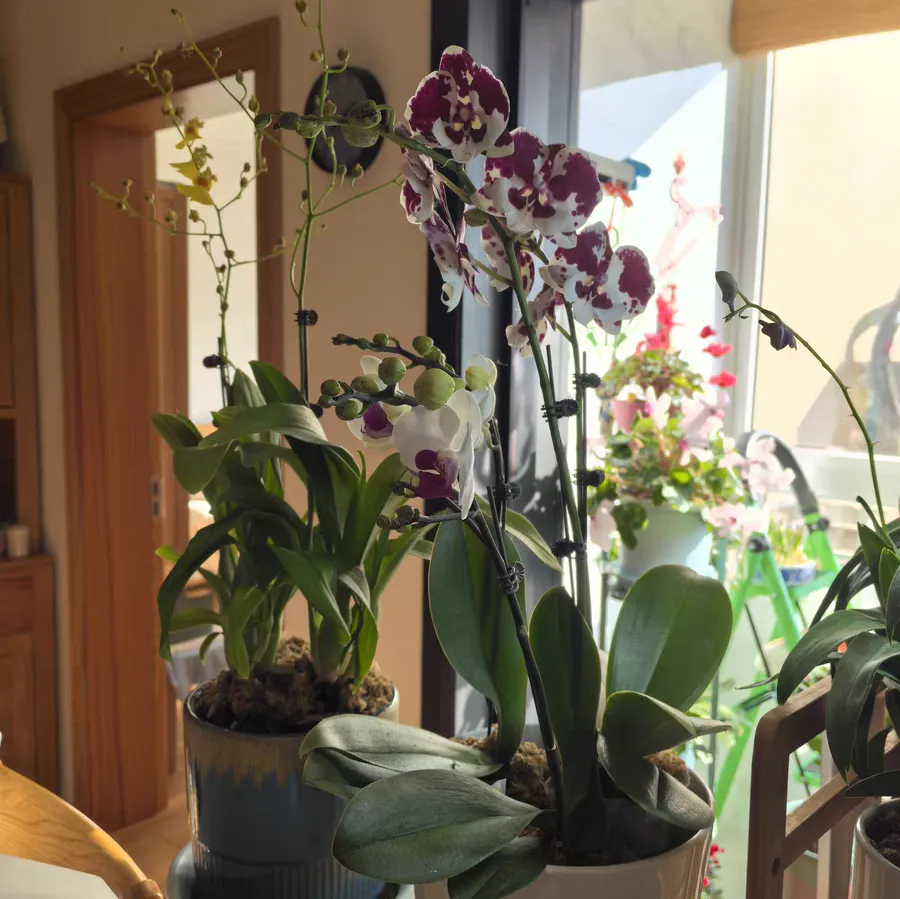In an indoor environment without sunlight, it's a good choice to select some shade-tolerant and easy-to-care-for plants. These plants can not only add greenery to the indoors but also purify the air and improve the quality of home life. The following are several inexpensive and good-looking plant recommendations. They are all excellent choices for indoor shade-tolerant plants.
Pilea peperomioides: Pilea peperomioides is native to southwestern Yunnan and Sichuan in China. Now it is widely cultivated around the world as an indoor potted ornamental plant. Its leaves are round and lovely, with high ornamental value. Pilea peperomioides likes warm and semi-shaded environments. It can also grow slowly under artificial light, but avoid direct sunlight. When taking care of it, keep the soil moist but not waterlogged. Increase the frequency of watering during the hot summer and spray water on the leaves to increase air humidity. In addition, keep the indoor ventilation good and avoid pollution from smoke and harmful gases. Pilea peperomioides is suitable for growing in loose, fertile and well-drained slightly acidic soil. You can mix decomposed leaf soil, garden soil and river sand in a certain proportion and add an appropriate amount of decomposed organic fertilizer as base fertilizer.
Beaucarnea recurvata: Beaucarnea recurvata is native to eastern Mexico. It likes sufficient sunlight but can also adapt to semi-shaded environments. Its unique shape makes it suitable for adding a touch of green to indoor spaces such as living rooms and balconies. Beaucarnea recurvata likes a humid environment, but watering should be moderate to avoid root rot. During the hot summer, it is necessary to appropriately increase the frequency of watering to keep the soil moist. The suitable growth temperature is 18 - 28 °C, and it should not be lower than 10 °C in winter. Beaucarnea recurvata can be fertilized with a thin liquid fertilizer once a month, and fertilization should be reduced in winter. When propagating, it can be done by division or cuttings. Just keep the soil moist and at an appropriate temperature, and new plants can be successfully propagated.
Syngonium podophyllum: Syngonium podophyllum is a plant that is very suitable for indoor care. Its leaf markings and colors are different, with extremely high ornamental value. Syngonium podophyllum likes bright light but it shouldn't be too strong, and avoid direct sunlight. Just place it in a place with sufficient light indoors. If the light is insufficient, the leaves will turn green. Keep the soil moist but not waterlogged, otherwise the roots will rot. Syngonium podophyllum likes warm, humid and semi-shaded environments. It is shade-tolerant but not cold-resistant, and also afraid of extreme heat and drought. The temperature is preferably kept above 10 °C in winter, and high-temperature sun exposure should be avoided in summer. Regularly pruning yellow and withered leaves can promote the growth of new shoots and make the plant fuller.
Hoya carnosa: Hoya carnosa has elegant leaves and gorgeous flowers, and it is an excellent choice for indoor decoration. It likes bright light but should not be exposed to direct sunlight. It's best to place it in a place with sufficient light indoors, such as on a windowsill. Keep the soil moist but not too wet. Water it once a week. You can water a little more in summer, but be careful not to let the soil get waterlogged. Hoya carnosa likes well-drained soil. You can choose peat soil or decomposed leaf soil for cultivation. Fertilize it once a month, and during the growth period in summer, you can fertilize it once every two weeks. Hoya carnosa generally doesn't need frequent pruning, but you can trim overly long or withered leaves in spring or summer to keep the plant beautiful.
Begonia: Begonia likes sufficient scattered light. Direct light will burn it. It's most suitable to place it in a place by the window where there is light but not direct sunlight. The suitable growth temperature is 18 - 25 °C, and the temperature should not be lower than 5 °C in winter. When watering, follow the principle of "water when the soil is dry and water thoroughly", and avoid waterlogging in the flowerpot soil which may lead to root rot. Keep a moderate humidity. The optimal humidity is about 60%, which is helpful for the healthy growth of begonia. Regularly pruning yellow and withered leaves can promote the growth of new shoots. Begonia needs a good ventilation environment and should avoid staying in a stuffy environment for too long, otherwise it is easy to get sick.
The above five plants are not only inexpensive and good-looking but also very suitable for being cared for in an indoor environment without sunlight. They each have their own characteristics. Some have round and lovely leaves, some have unique shapes, and some have gorgeous flowers, which can add a touch of green and vitality to the indoors.
What plants are good to grow indoors without sunlight?

Share with
Tagged in :




Leave a Reply